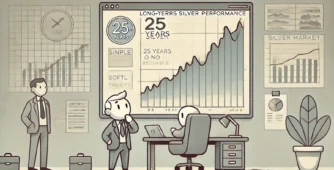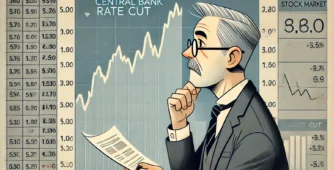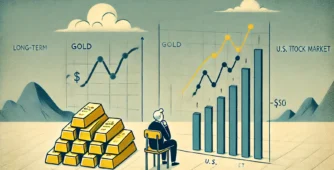To understand the dynamics between ITC and British American Tobacco (BAT or BTI as it is called), it is crucial to look at the stock price movement of ITC over the past 25 years. The chart reveals that ITC has had a remarkable journey in both local currency and dollar terms.
Starting from 1998, ITC experienced a phase of minimal returns until September 2003. What is notable is that these returns are adjusted for dividends, which takes into account the overall performance of the company rather than just the stock price. From September 2003 to July 2017, ITC witnessed an extraordinary surge, with its stock price increasing nearly 16 to 17 times. This period accounted for approximately 14 years of continual growth.
However, like any market, corrections and setbacks also occurred. The COVID pandemic prompted a correction in the stock price, but ITC managed a post-COVID resurrection. Overall, within the last 25 years, ITC has achieved an impressive return of 22 times in dollar terms. These figures showcase the substantial growth and high returns that ITC has generated for its investors.
Alongside ITC, it is crucial to explore the role of British American Tobacco Industries Ltd., as it holds a significant stake of 29% in ITC. British American Tobacco Industries Ltd. (BTI), the world’s largest tobacco company, seems to be quite happy with the dividends it receives from its stake in ITC. There are also rumours that BTI may divest its shares in ITC, leading to fluctuations in ITC’s stock price whenever such speculation arises. However, at present, there is no confirmed thesis regarding BTI’s divestment plans.
Moreover, the market capitalization of both companies is noteworthy. BTI boasts a market cap of around $65-70 billion, while ITC’s market cap has recently reached approximately $66-67 billion. These near-equivalent market caps indicate similarities in market perception and investor confidence in both companies.
The Mirror-Like Relationship
If we observe the trend in both companies’ stock prices over the last 25 years, an intriguing pattern emerges. In dollar terms, ITC and BTI have mirrored each other’s performance, apart from a recent deviation that has occurred in the past one and a half years. This mirror-like formation, with occasional minor discrepancies, persisted consistently until March 2020.
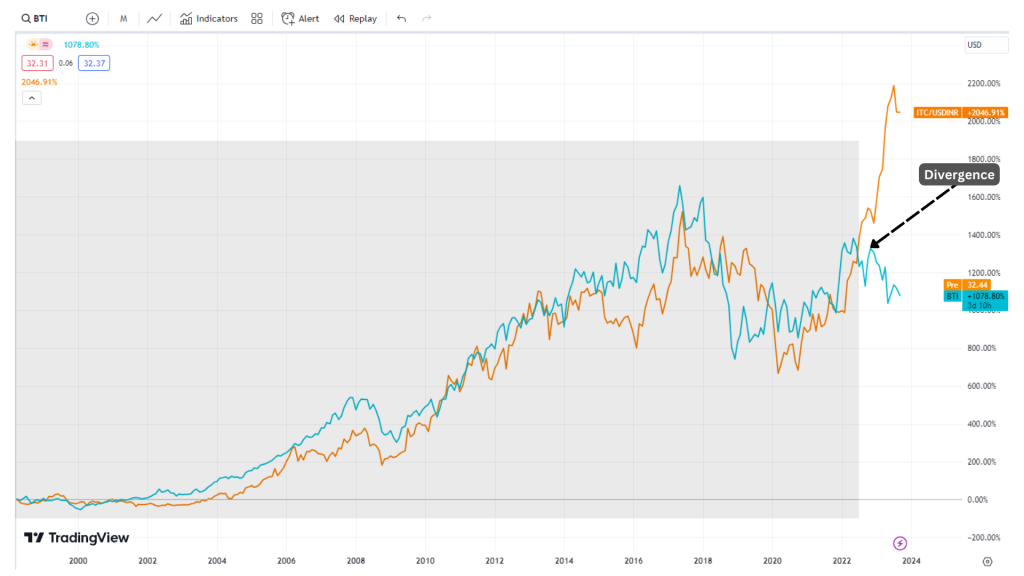
Post Mar 2022
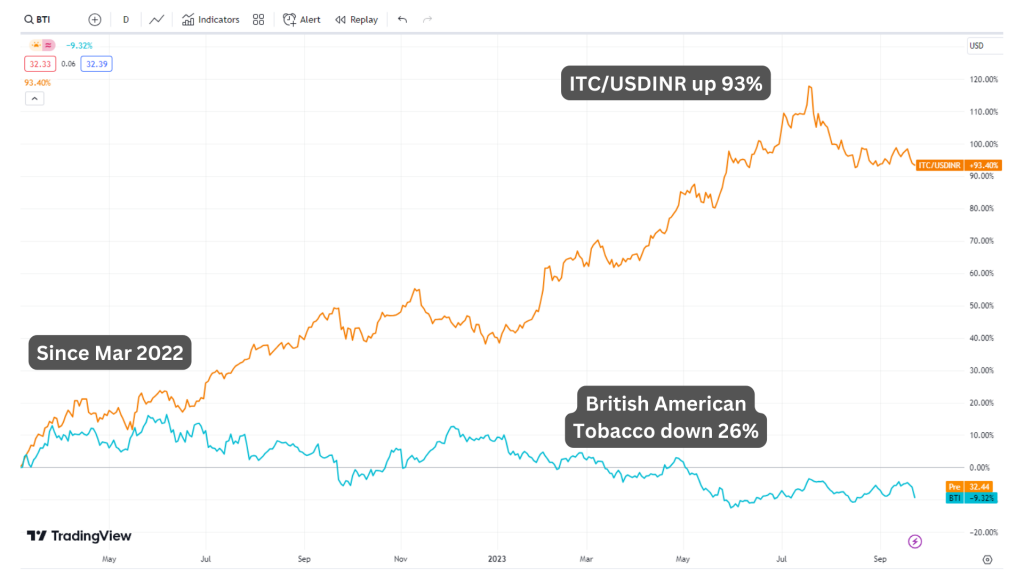
During this period, ITC experienced a significant upsurge from the point of deviation, nearly doubling its stock price. Contrarily, BTI suffered a 25% to 30% decline within the same time frame. Such a substantial divergence would certainly raise a few eyebrows.
Considering the recent divergence between ITC and BTI, two potential scenarios can be theorised. However, it is important to note that these scenarios are speculative, and there is no definite outcome or answer.
Scenario 1 – Convergence
Under this scenario, it is anticipated that the recent deviation between the companies’ stock prices is only temporary. ITC may experience a correction, causing its stock to come down, or BTI may witness an upward surge, resulting in both companies converging once again. This scenario considers the possibility that the balance between the companies will be restored, reverting to the previously observed mirror-like relationship.
Scenario 2 – Divergence
Alternatively, it is plausible that ITC and BTI are moving in different directions due to various market dynamics. It could be argued that the markets served by BTI are not experiencing substantial growth, while ITC operates in a thriving growth market. In this scenario, the returns generated by ITC are subsidising the losses incurred by BTI in other markets. This divergence would signify a departure from the historical pattern and a significant shift in the relationship between the two companies.
The contrasting recent performances of ITC and BTI present an open-ended question for investors and analysts. It is unclear whether the deviation between the companies is merely temporary or indicative of a larger trend. While some believe that the relationship between the companies will continue as long as ITC remains profitable and generates substantial dividends, others speculate that fundamental forces are at play, leading to an eventual divergence.
It is worth noting that stock market analysis involves a multitude of factors, including industry trends, consumer behaviour, economic conditions, and global events. These variables contribute to the complex dynamics between companies and the resulting stock price fluctuations. Understanding these dynamics requires a comprehensive analysis of multiple factors beyond the scope of this case study.
In conclusion, the case study of ITC and BTI’s relationship offers an intriguing glimpse into the interplay between two significant players in the tobacco industry. Their historical mirroring, followed by a recent divergence, presents a complex puzzle for investors and analysts alike. Whether the future holds a convergence or further divergence remains uncertain. The outcome will undoubtedly offer valuable insights into the dynamics of the stock market and the factors influencing the performance of these companies.
What is your perspective on this case study? Do you believe ITC and BTI will eventually converge, or are they on divergent paths? Share your thoughts over an email if you’d like that.
Download the WeekendInvesting App

If you have any questions, please write to support@weekendinvesting.com




